Martial arts are codified systems and traditions of combat practices, which are practised for a variety of reasons – self-defence, competition, physical health and fitness, entertainment, as well as mental, physical, and spiritual development.
Martial art literally means ‘arts associated with waging of war’. A number of martial arts form in the country are closely related to dance, yoga and performing arts.
India, the land of diverse culture and ethnicities, is known for its wide variety of martial arts that have developed since the ancient times. Earlier used for warfare, these art forms are today usually used for demonstration, as a part of a ritual, achieving physical fitness or as a means of self-defence.
Some of the art forms were banned during the British rule, including Kalaripayattu and Silambam, but they resurfaced and gained popularity post independence.
List of Martial Arts in India
| Name of the Martial Art | Associated Famous Place |
|---|---|
| Silambam | Tamil Nadu |
| Kalaripayattu | Kerala |
| Lathi Khela | North India |
| Gatka | Punjab |
| Thang-Ta | Manipur |
| Mardani Khel | Maharashtra |
| Pari Khanda | Bihar |
| Kathi Samu | Andhra Pradesh |
| Paika Akhada | Odisha |
| Sqay | Kashmir |
| Kathi Samu | Andhra Pradesh |
| Bandesh | India |
| Malla Yuddha | South India |
| Malla Khamb | 12th century in Maharashtra |
| Insu Knawr | Mizoram |
| Kirip, Saldu | Nicobar |
| Varma Ati | Tamil Nadu |
Kalaripayattu
- Kalaripayattu is a martial art that originated as a style in Kerala during the 13th Century AD. This is an ancient traditional martial art form of Kerala, India.
- The word Kalari first appears in Sangam literature to describe both a battlefield and combat arena.
- Kalari, a Malayalam word, refers to a specific type of school/gymnasium/training hall where martial arts are practiced or taught.
- The word Kalari tatt denoted a martial feat, while Kalari kozhai meant a coward in war.
- It is considered to be one of the oldest fighting systems in existence.
- It is now practised in Kerala, in contiguous parts of Tamil Nadu.
- It was originally practised in the northern and central parts of Kerala and the Tulunadu region of Karnataka.
- Kalaripayattu means battlefield practices or training that takes place in an arena or a gymnasium of specific dimensions with mud flooring.
- Basis of all martial art forms like Karate, Kungfu was originally developed from Kalaripayattu.
- This art form includes mock duels (armed and unarmed combat) and physical exercises.
- Not accompanied by any drumming or song, the most important aspect is the style of fighting.
- Kalaripayattu’s most important key is footwork; it also includes kicks, strikes and weapon-based practice. Even women practice this art.
- Kalaripayattu is still rooted in the traditional rituals and ceremonies.
- Kalaripayattu includes a number of techniques and aspects. Some of them are: Uzhichil or the massage with Gingli oil, Fighting with Otta (an ‘S’ shaped stick), Maipayattu or body exercises, Puliyankam or sword fight, Verumkai or bare-handed fight, Angathari or use of metal weapons and sticks of Kolthari.
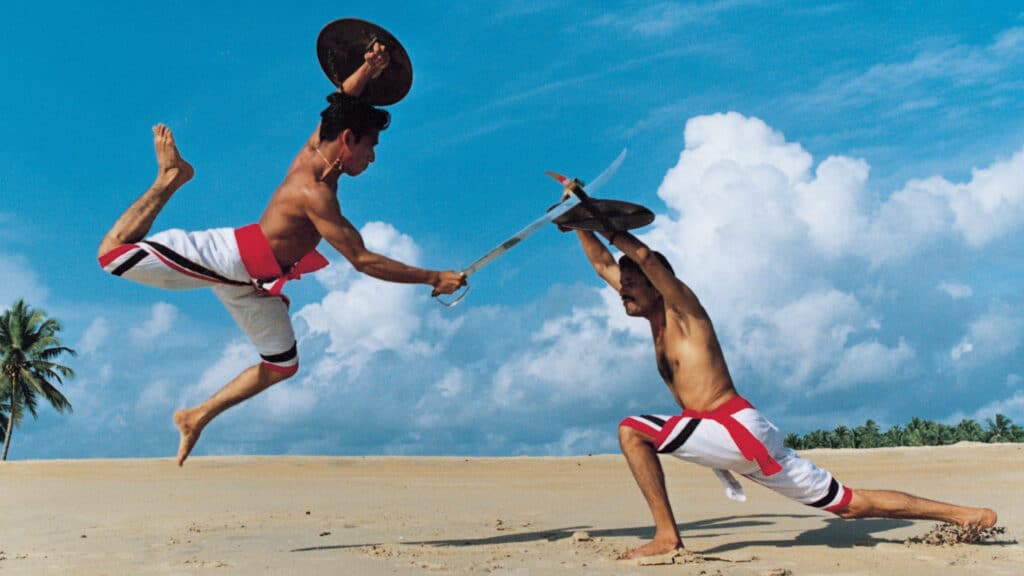
Silambam
- Silambam, a kind of staff fencing, is a modern and scientific martial art of Tamil Nadu.
- “Silambal” is a word generally used to denote the sound created by a fast-flowing spring, the murmur of leaves, the chirping noises of birds etc.
- Lord Muruga (son of Lord Shiva, also known as Kartekeya) and sage Agasthya created this martial art style.
- Pandyas, Cholas and Cheras, promoted it during their reign. The reference to the sale of silambam staves, pearls, swords and armour to foreign traders can be found in a Tamil literature Silappadikaram, which dates back to 2nd AD. The silambam bamboo stave was one of the most popular trading items with the traders and visitors from Rome, Greece and Egypt.
- This art is believed to have travelled to Malaysia from its originating State, where it is a famous sport apart from being a mode of self-defence.
- The long-staff was used for both mock fighting and self-defence.
- It is closely related to Keralan kalaripayat and Sri Lankan angampora.
- Silambam was originally practised with bamboo sticks, and later with steel swords and shields.
- There are different kinds of techniques that are used in Silambam including swift movements of the foot, use of both hands to wield staff, use of thrust, cut, chop and sweep to achieve mastery and development of force, momentum and precision at different levels of the body (head, shoulder, hip and leg level).
- The player must be trained to diffuse an uncontrollable mob by using strokes like snake hits, monkey hits, hawk hits and also deflect stones thrown by them.
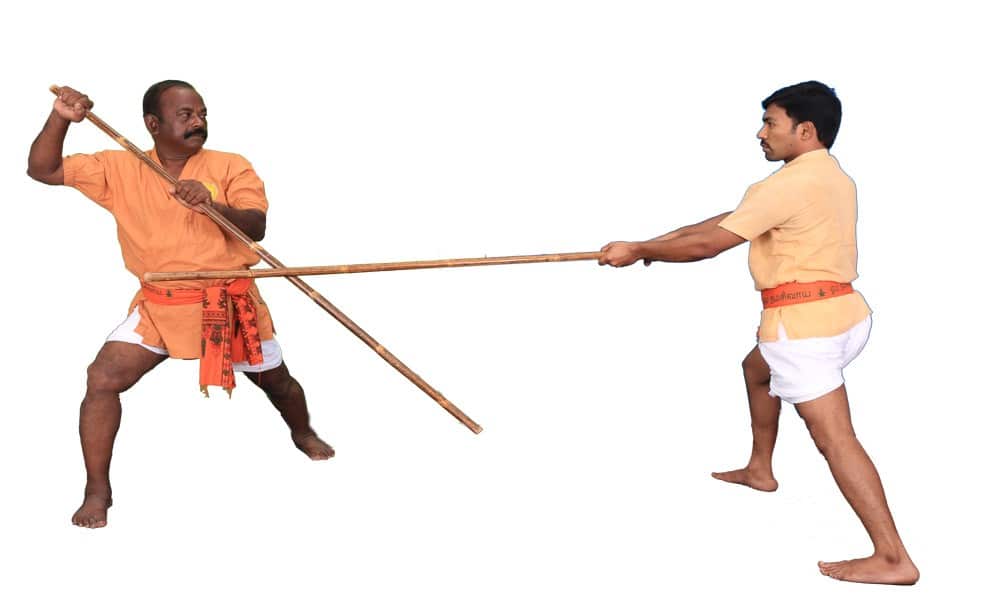
Thang-ta and Sarit Sarak
- Thang-Ta, India’s popular martial art, is originated from Manipur.
- Created by the Meitei people of Manipur, Thang-ta is an armed martial art that finds its mention as one of the most lethal combat forms.
- Sarit Sarak, on the other hand, is an unarmed art form that uses hand-to-hand combat.
- Their history can be traced back to the 17th century when it was successfully used by the Manipuri kings to fight with British. The capture of this region by the British witnessed the ban on these art forms, however post independence there was a resurfacing of the same.
- Thang refers to a ‘sword’, while Ta refers to a ‘spear’, thus sword and spear are the two main elements of Thang-ta.
- The two components Thang-ta and Sarit Sarak are together called Huyen Langlon.
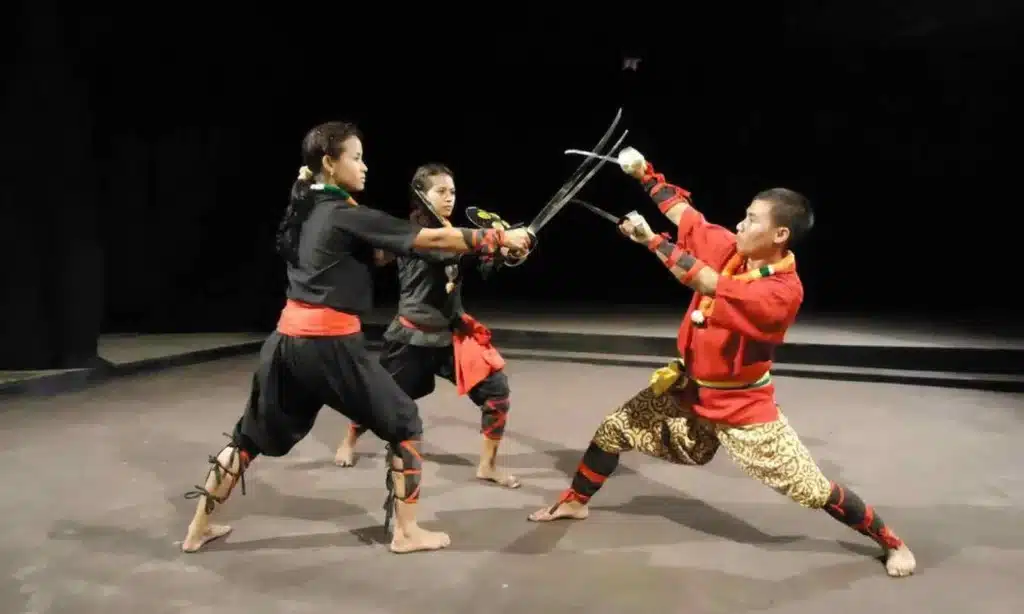
Cheibi Gad-ga
- One of the most ancient martial arts of Manipur, Cheibi Gad-ga involves fighting using a sword and a shield.
- It has now been modified to a stick encased in soft leather in place of a sword and a leather shield.
- The contest takes place in a circle of 7 metre diameter, on a flat surface. Within the circle, there are two lines, 2 metre apart. The ‘Cheibi’ stick is between 2 to 2.5 ft in length, while the shield is around 1 metre in diameter.
- Victory in this contest is achieved according to the points earned during a duel. The points are given based on skills and brute force.
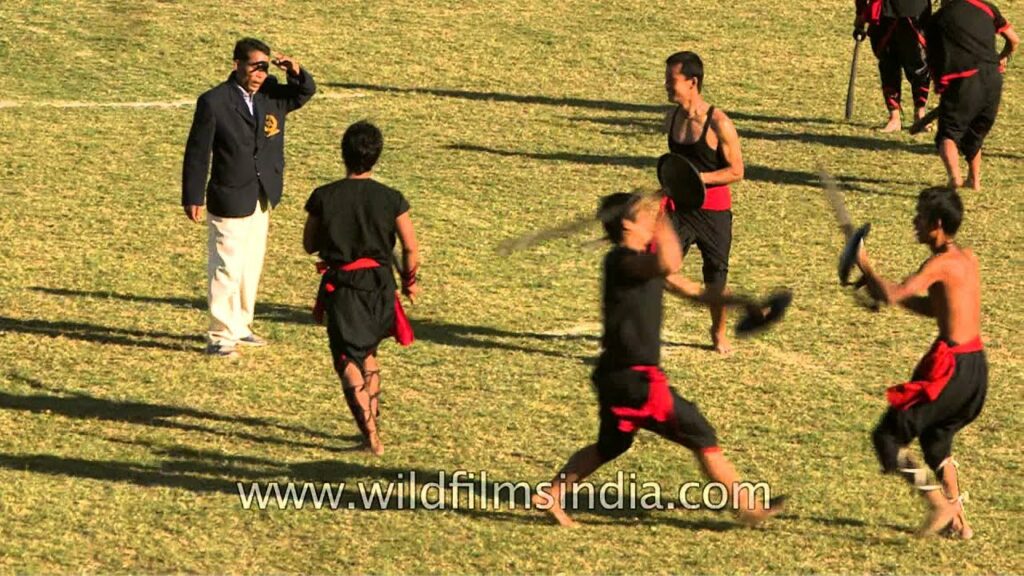
Pari-khanda
- Pari-khanda, created by Rajputs, is a form of martial art from Bihar.
- It involves fighting using sword and shield. Still practiced in many parts of Bihar, its steps and techniques are widely used in Chhau dance.
- The name of this martial art consists of two words, ‘Pari’ that means shield while ‘khanda’ refers to sword, thus the use of both sword and shield in this art.
Thoda
- Originating from Himachal Pradesh, Thoda is a mixture of martial arts, sports and culture.
- It takes place during Baisakhi festival in April every year. A number of community prayers are done so as to invoke the blessings of Goddesses Mashoo and Durga, the principal deities.
- The martial art relies on a player’s skill of archery.
- Thoda can be dated back to Mahabharata, the times when bows and arrows were used in the epic battle, in the Valleys of Kullu and Manali.
- In the game, there are two groups of roughly 500 people each. Most of these are not archers but dancers who come along to boost the morale of their respective teams. The game is played in a marked court so as to ensure a certain degree of discipline. The two teams are called Pashis and Saathis, who are believed to be the descendants of Pandavas and Kauravas of Mahabharata.
- The archers aim for the leg, below the knee, as there are negative points for striking any other parts of the body.
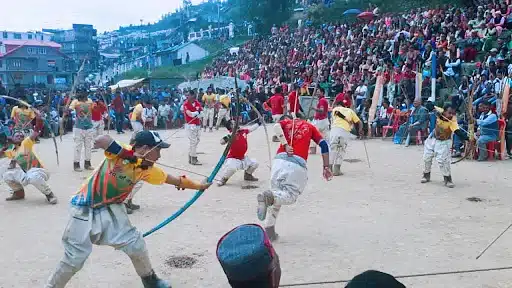
Gatka
- Gatka is a weapon based martial art form, performed by the Sikhs of Punjab.
- The name ‘Gatka’ refers to the one whose freedom belongs to grace.
- Gatka features the skillful use of weapons, including stick, Kirpan, Talwar and Kataar.
- The attack and defence in this art form is determined by the various positions of hands and feet and the nature of weapon used.
- It is displayed on a number of celebrations in the State including fairs.
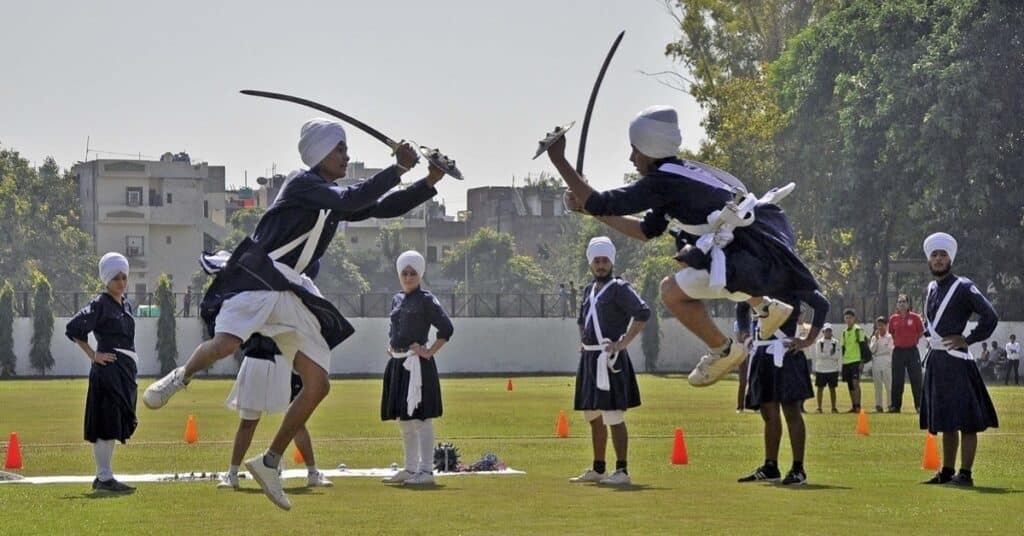
Mardani Khel
- This is a traditional Maharashtrian armed martial art, which is practiced widely in the district of Kolhapur.
- Mardani Khel focuses primarily on skills of weaponry, especially swords, swift movements and use of low stances that is suited to its originating place, the hill ranges.
- It is known for the use of the unique Indian Patta (sword) and Vita (corded lance). Famous practitioners included Shivaji.
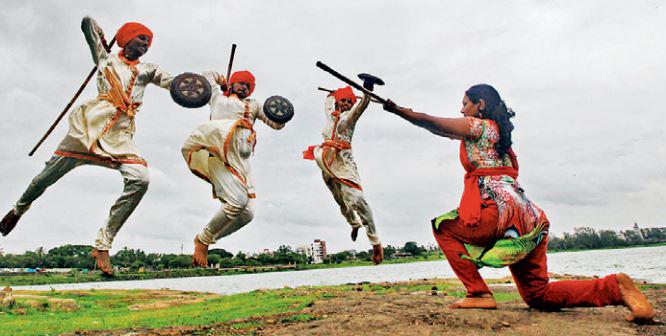
Lathi (Lathi Khela)
- Lathi is an ancient armed martial art form of the country, Lathi also denotes one the world’s oldest weapons used in martial arts.
- Lathi refers to a ‘stick’ (usually cane sticks), which is generally 6 to 8 ft in length and sometimes metal tipped.
- Indian police can be seen using such Lathis to control crowd.
- Majorly practiced in Punjab and Bengal, it still is one of the popular sport in villages.
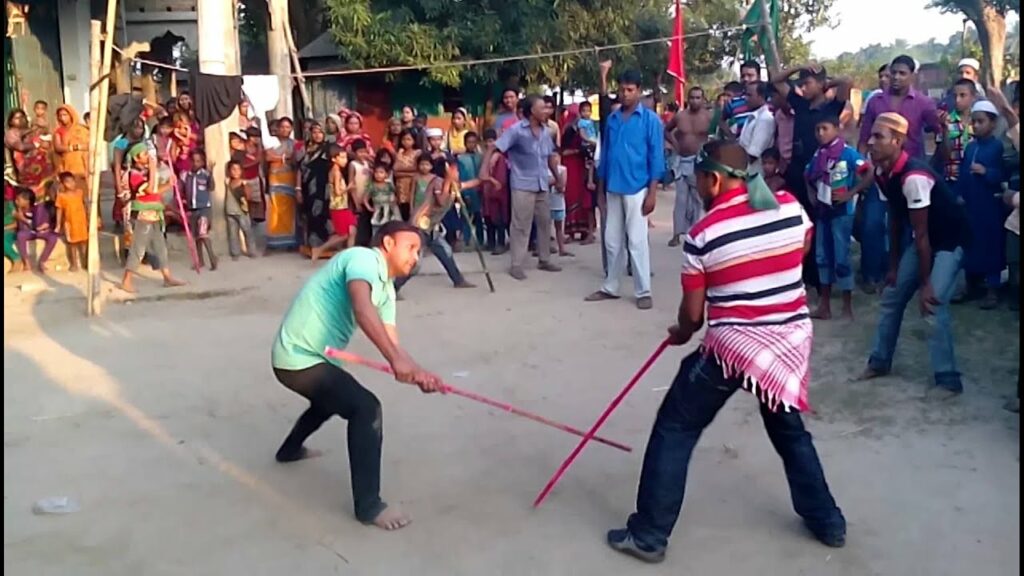
Inbuan Wrestling
- A native martial art of Mizoram, Inbuan Wrestling is believed to have its genesis in 1750 AD.
- It was recognized as a sport after the “Mizo” people migrated from Burma to the Lushai Hills.
- It has very strict rules that prohibit stepping out of the circle, kicking and knee bending.
- The way to win this is by lifting the opponent off their feet, while stringently adhering to the rules.
- It also involves catching of the belt (worn around their waist) by the wrestlers.
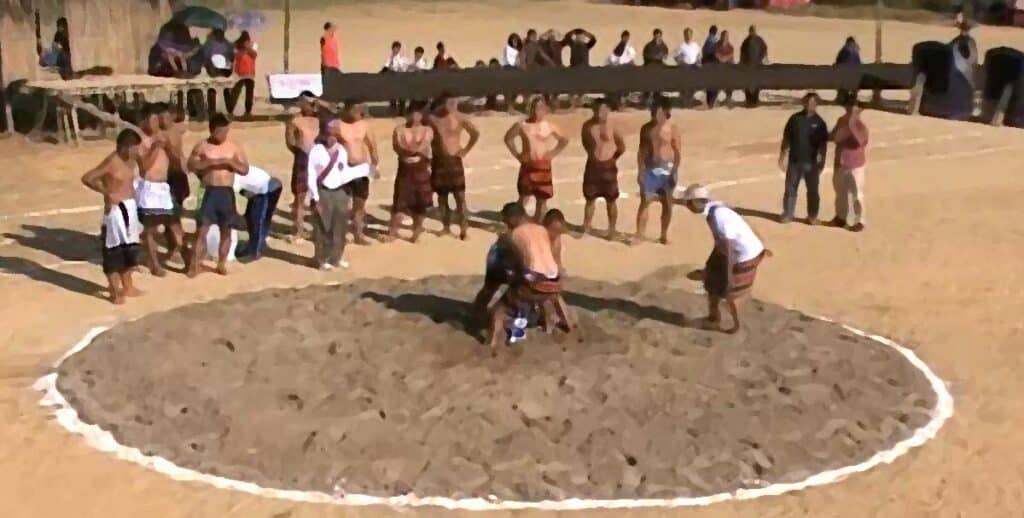
Kuttu Varisai (Empty-Hand Silambam)
- First mentioned in Sangam literature (1st or 2nd century BC), Kuttu Varisai translates to ‘empty hand combat’.
- Kuttu Varisai is mainly practiced in Tamil Nadu, although it is quite popular in North-Eastern part of Sri Lanka and Malaysia.
- An unarmed Dravidian martial art, it is used to advance athleticism and footwork through starching, yoga, gymnastics and breathing exercises.
- The major techniques used in this art include grappling, striking and locking. It also uses animal based sets including snake, eagle, tiger, elephant and monkey.
- It is considered as an unarmed component of Silambam.
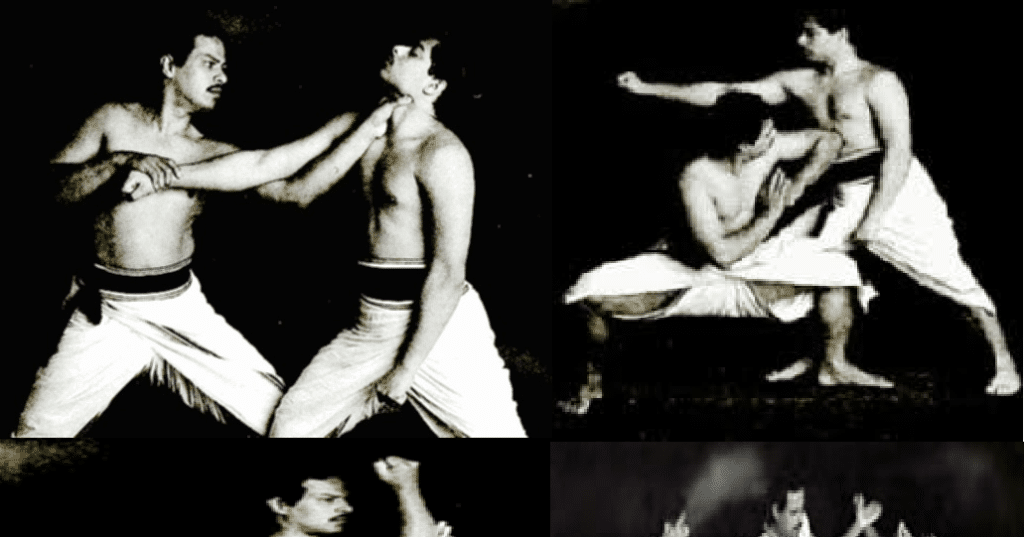
Musti Yuddha
- Originated in one of the oldest city Varanasi, Musti Yuddha is an unarmed martial art form resembling boxing.
- It uses techniques like kicks, punches, knee and elbow strikes. Although rarely visible now, it was quite a popular art during 1960s.
- Musti Yuddha incorporated the development of all three aspects, physical, mental and spiritual.
- The fights in this art are divided into four categories and are named according to the Hindu Gods that excelled that particular kind of art from. The first one is called Jambuvanti that refers to the forcing the opponent into submission through locking and holding. The second is Hanumanti, which is for technical superiority. The third refers to Bhimaseni, which focuses on sheer strength while the last one is called Jarasandhi that concentrates on limb and joint breaking.
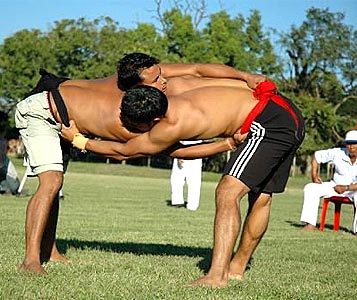
Kathi Samu
- Kathi Samu is one of the ancient martial arts that originated in Andhra Pradesh, and is practised by the royal armies.
- Kathi means sword, and Kathi Samu is a martial art that involves fighting with swords.
- This prestigious martial art employs various kinds of swords.
- The place where Kathi Samu is performed is known as ‘garidi’.
- In Kothi Samu, the stick fight known as ‘vairi’ plays a significant part as a precursor to the real sword fight.
- Other essential components of sword skills include ‘Gareja,‘ in which a person holds four swords, two in each hand.
- Historically, the technique was patronised by the Kingdom of Vizianagaram, and Karvetinagaram.
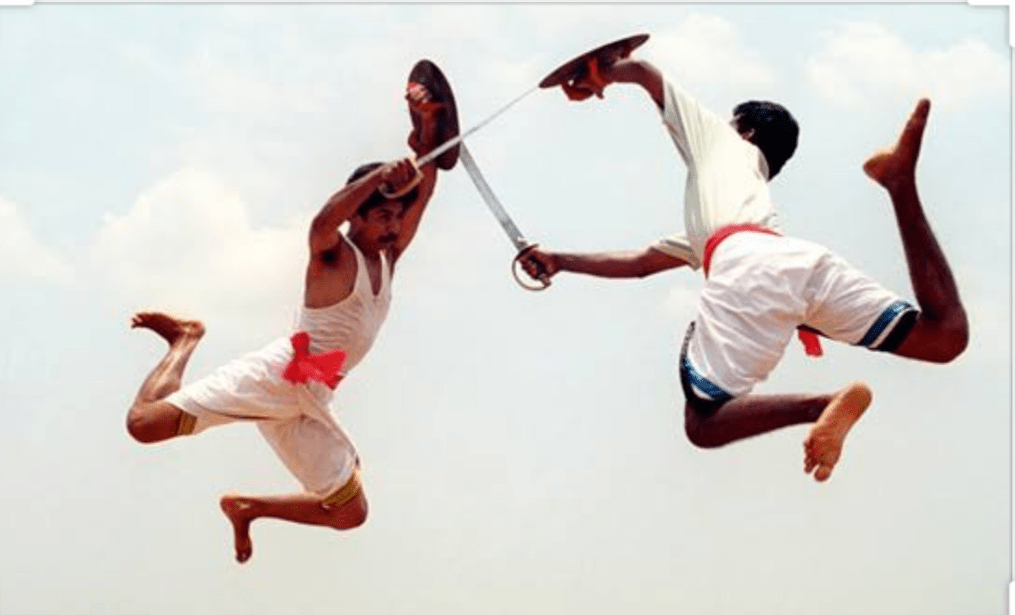
Sqay (Kashmir)
- Sqay is a martial art that belongs to Kashmir.
- It is a kind of sword-fighting.
- A curved single-edged sword and a shield are used by armed sqay.
- Armed sqay can use one sword in each hand.
- Kicks, punches, locks, and chops are examples of unarmed tactics.
- Various approaches are used by Sqay. Techniques and lessons in both freehand and sword for single and double swords.
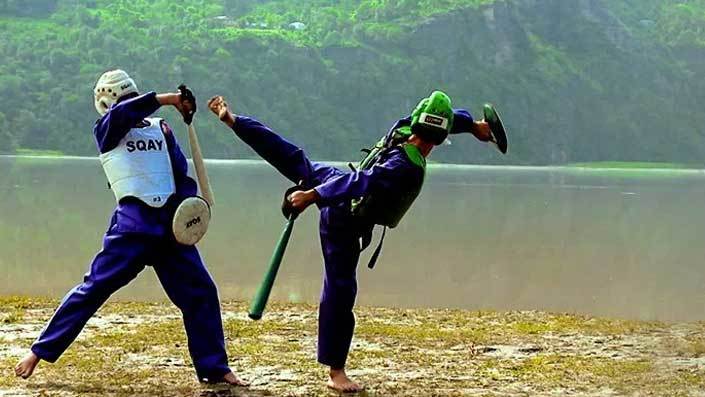
Paikha Akhadha (Odisha)
- Paikha akhada, also known as paika akhara, is an Odia name for “warrior scholl.”
- It was used as a peasant militia training school in Odisha.
- It is used to do conventional physical activities.
- Rhythmic gestures and weapons swung in synchronization to the beat of the drum are used in this performance art.
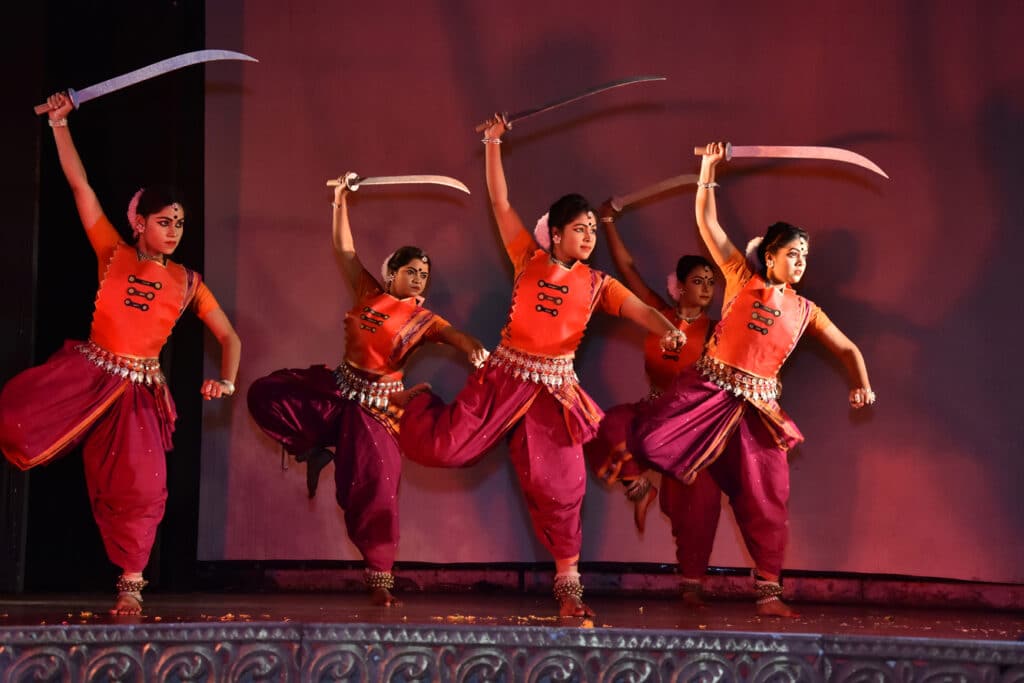
Malla Khamb
- A traditional Indian sport in which a gymnast performs aerial yoga postures.
- The word Mallakhamb refers to the pole used in the sport.
- Three popular versions of Mallakhamba are practised using a sheesham pole, cane, or rope.
- The name Mallakhambha derives from the terms malla meaning wrestler, and Khamb which means a pole.
- On April 9, 2013 the Indian state of Madhya Pradesh declared Mallakhambha as the state sport.
Bandesh
- Bandesh is one of the ancient Indian Martial Arts forms.
- It is basically a collection of martial techniques mainly used to disarm and defeat an armed opponent without taking his life.
- Different types of lock holds are utilised against different kinds of weapons like daggers, swords, long staff etc.
- In the competition of this ancient martial art, the conqueror is the one who takes the weapon from the other.
Saldu – Nicobar
- Saldu, a form of wrestling, is one of the prominent sports of the Nicobarese tribe
- It does not require a court, only vacant land
- The field is divided by a line in the centre, and there are no boundary lines
- The number of players is as desired, but each team is to comprise an equal number of players
- Usually, a maximum of 20 players are allowed in each team
Kirip – Nicobar
- Kirip is an indigenous form of wrestling quite popular with the Nicobarese tribe
- In this sport, before the bout begins, wrestlers grip each other from behind with their hands, and this grip is not to be slackened till the very end of the competition
- The wrestler, using various parts of the body, including the leg, tries to thrust the opponent to the ground
- If a contestant’s back touches the ground, he is declared the loser
Insu Knawr – Mizoram
- Rod pushing sport is an indigenous game of Mizoram, a state in North – East India
- A circle of 16 ft diameter with a straight line across the circle at the center is drawn.
- Suk or a wooden rod or bamboo rod shall be approximately 8 ft long and 2.5 – 3 inches in diameter
